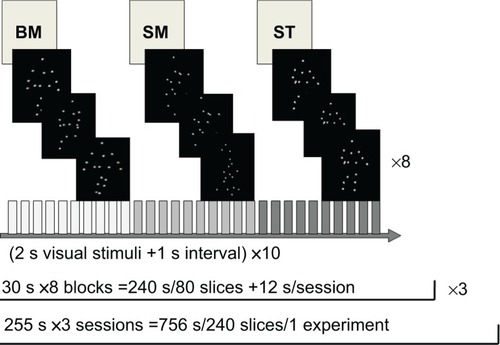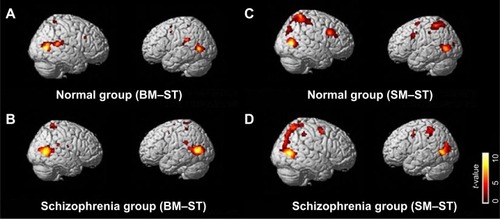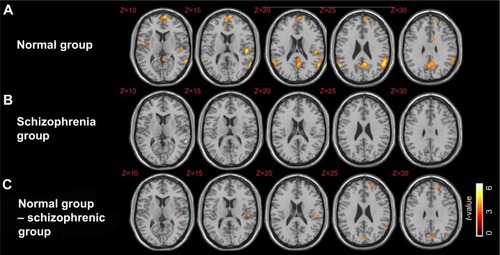Figures & data
Table 1 Demographic data
Figure 1 Task design.
Abbreviations: BM, biological motion; s, seconds; SM, scrambled motion; ST, static condition.

Figure 2 Brain regions significantly activated in the BM–ST (A, B) and SM–ST (C, D) conditions have been superimposed onto the SPM templates.
Abbreviations: BM, biological motion; FDR, false discovery rate; hMT+, motion-sensitive area; SM, scrambled motion; SPM, statistical parametric mapping; ST, static condition.

Figure 3 Brain regions significantly activated in the BM–SM conditions have been superimposed onto the SPM templates.
Abbreviations: BM, biological motion; FDR, false discovery rate; hMT+, motion-sensitive area; SM, scrambled motion; SPM, statistical parametric mapping; STS, superior temporal sulcus.

Table 2 Significantly activated clusters for the BM–ST contrast
Table 3 Significantly activated clusters for the SM–ST contrast
Table 4 Significantly activated clusters for the BM–SM contrast
